Invisible radiation of the universe
The pages are still empty, but in a strange way it is clear that all the words have already been written in invisible ink and only pray for visibility.
- Vladimir Nabokov
Fine images of deep space - from distant galaxies to stars, clusters, nebulae in our galaxy - have one thing in common.
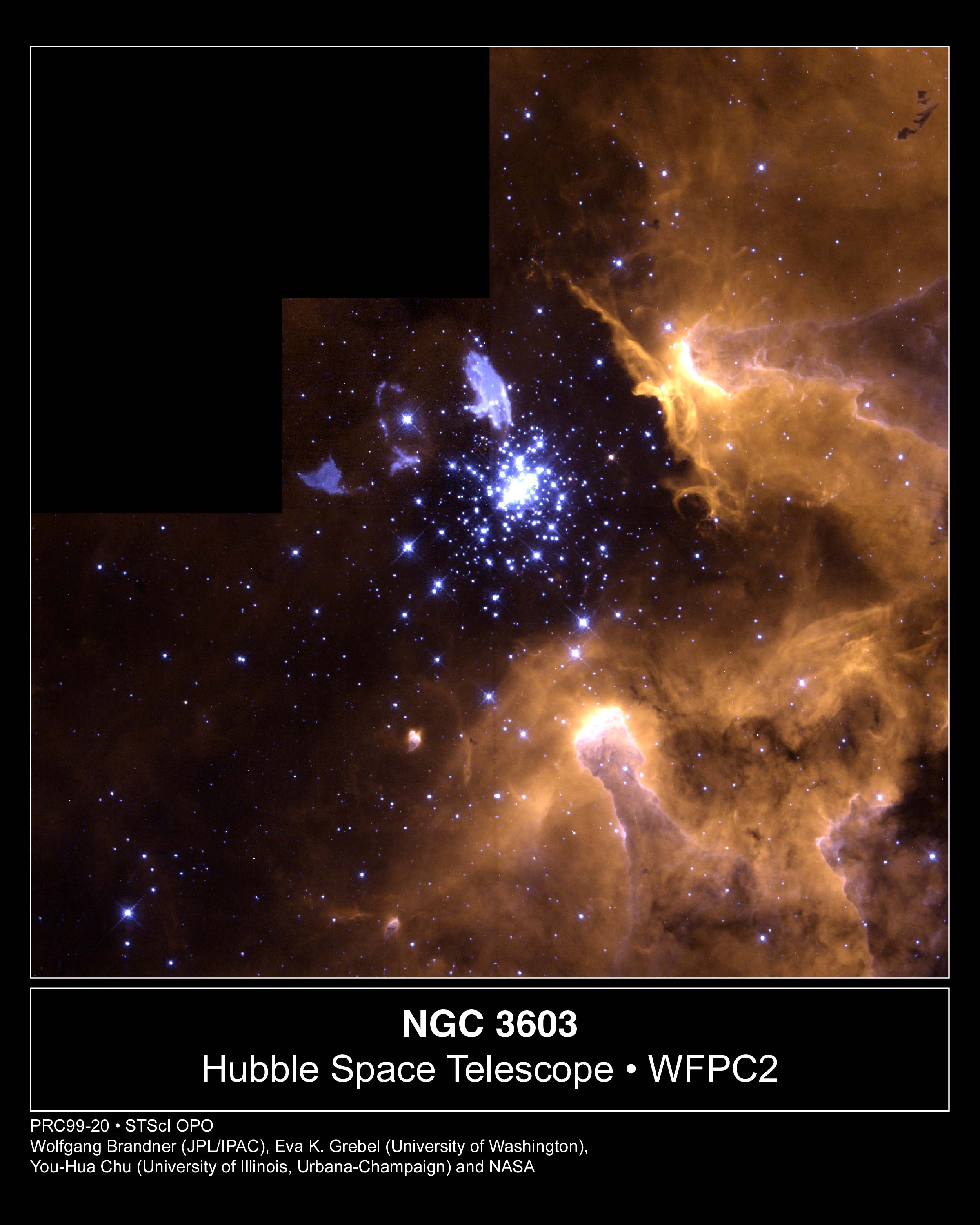
Shine! Specifically, electromagnetic radiation. This light does not always fall into the visible part of the spectrum, but it is to her that we are most accustomed. No wonder: the greatest source of energy for us is the same as for the cluster above, NGC 3603 .

')
The light emanating from these stars — as well as the light emanating from all stars — strongly depends on the temperature of the stars. The hotter it is, the more blue or even ultraviolet light will emanate from it, and the colder it is, the more it goes to the red one, or even into the infrared region, it will go away.
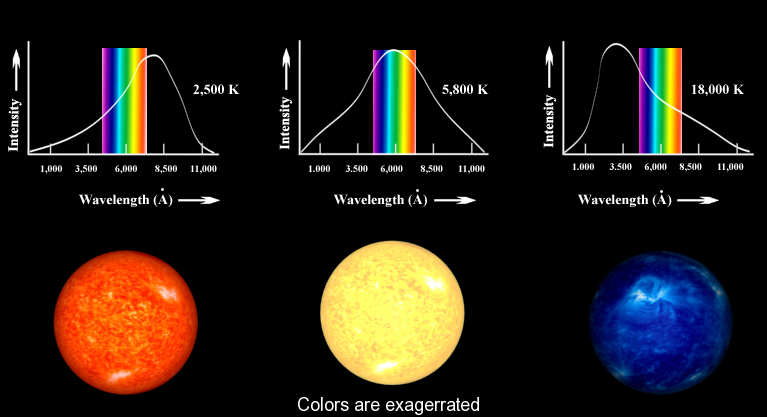
Colors are exaggerated
But not every star resembles our Sun, either a little colder or a little hotter. Some stars are thousands of times more massive, while others make up only a tiny fraction of the Sun’s mass.
Therefore, the fate of the stars there is a huge variety.
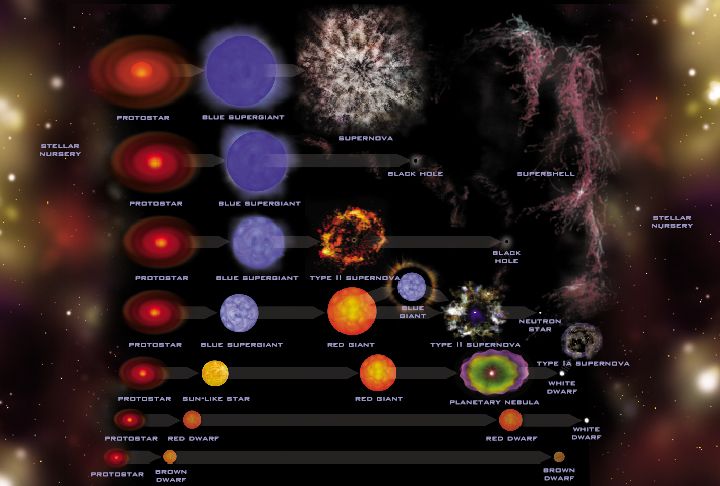
The overwhelming majority of stars known to us get their energy from the same place where the Sun takes it - from nuclear fusion - this is not the only source of energy for the stars of the Universe.
In addition to the nuclear reactions that produce this energy, a huge amount of energy is stored in gravity.
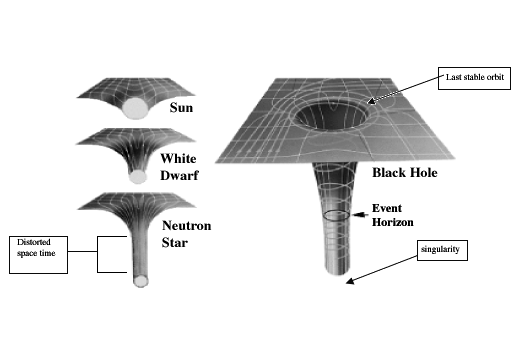
When a large mass collapses or collapses, a few interesting things happen, and also do not happen. Space-time outside mass - that which was outside the original star, before the collapse - does not change. Its energy does not change, the curvature does not change, the gravitational potential does not change, and so on.
But in the space-time that was originally located inside the object, and after collapse or compression was outside, the negative gravitational potential energy increases in absolute value. And this energy must go somewhere.
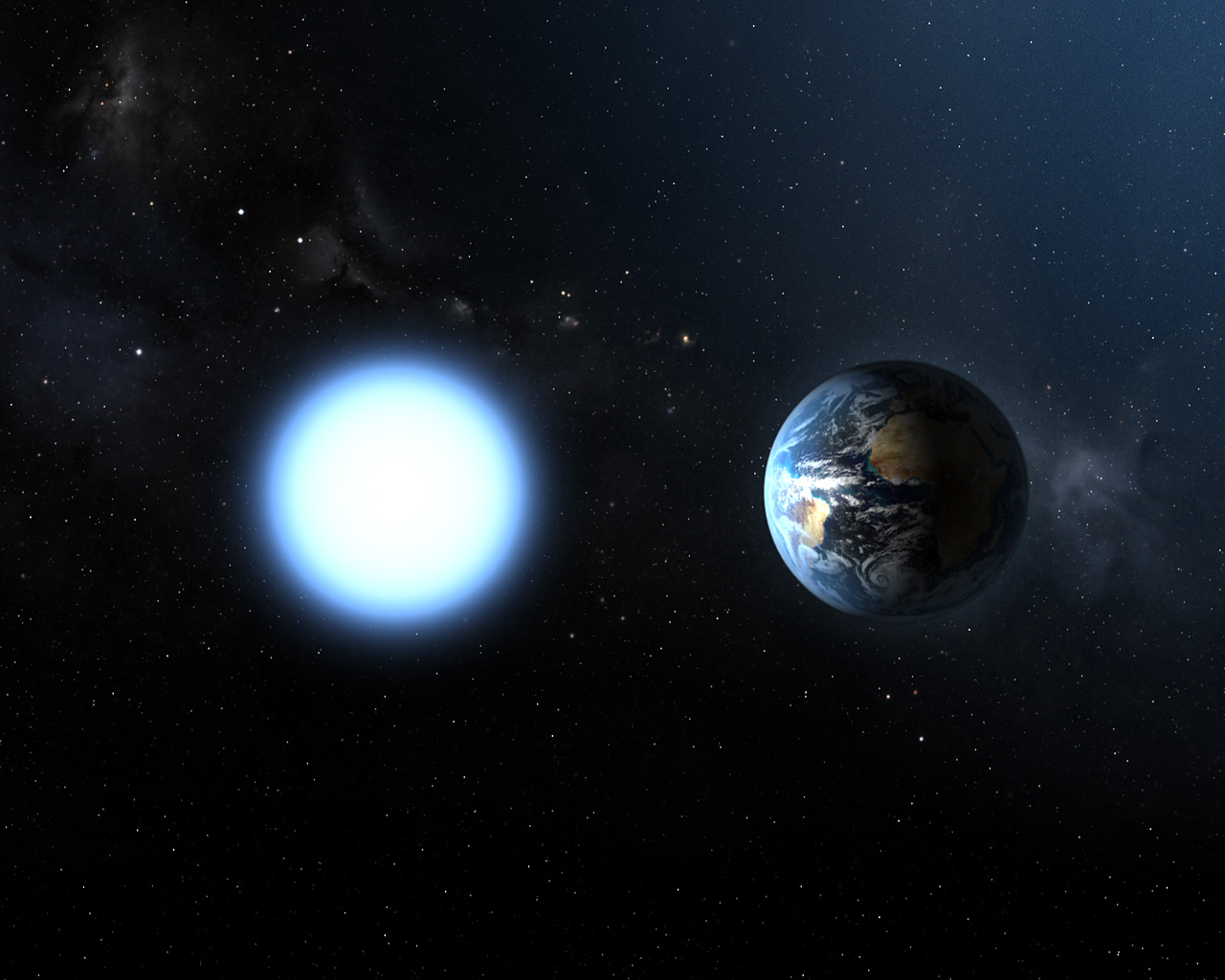
For example, it can turn into the light - this is exactly what happens with white dwarfs. They are comparable in mass with the Sun, but in size - with the Earth, and from them emanates a large amount of light, the source of energy for which is only gravitational compression.
For example, if a white dwarf appeared on the site of the Sun, it would still be 400 times lighter than our full moon!

But not every object that collapsed or collapsed was a single star in its solar system. Many of them, like the brightest stars in our sky , are binary systems. In a binary system, two stars, or star-shaped objects, rotate around each other. Over time, these orbits do not remain stable, because of gravity, they decrease, and the stars fall in a spiral to each other.
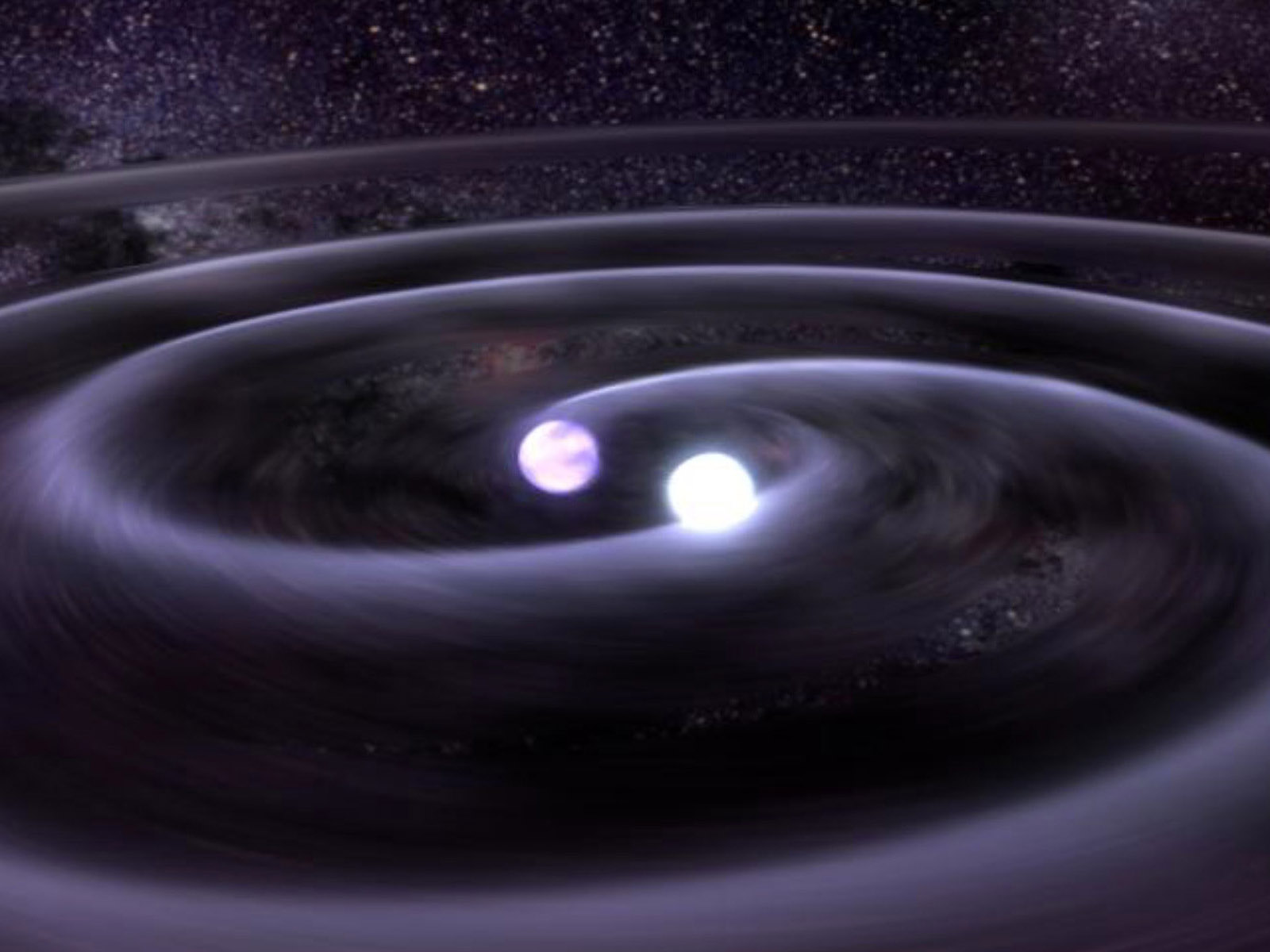
But this time, with a decrease in gravitational energy, it is not light that is emitted. And I’m not only talking about visible light - they do not emit any light. No x-rays, no infrared, no radio waves, nothing.
And what kind of radiation should such a system emit?
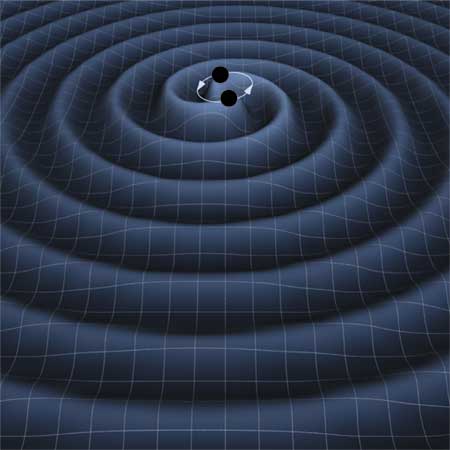
Gravitational radiation, also known as gravitational waves! These waves should propagate through space-time, and we can detect them not as light, but as a deformation of measurements of objects when a gravitational wave passes through them!
In the spiral approach of two objects, a constantly accelerating emission of waves should be observed. The closer they are to each other, the shorter the period becomes. In the phase of merging, catastrophic emission of both light (and, in the case of two white dwarfs, the appearance of a supernova is quite likely) and gravitational waves, followed by a calming phase of the waves, should occur.
This is a bold prediction of Einstein’s general theory of relativity. But we have already observed, though not directly, one of the important aspects of this phenomenon.
Observing two pulsars (collapsed neutron stars) orbiting each other, we can predict a decrease in the orbital period of these stars. And for more than 30 years that have passed since the discovery of the first double pulsar, we did just that.
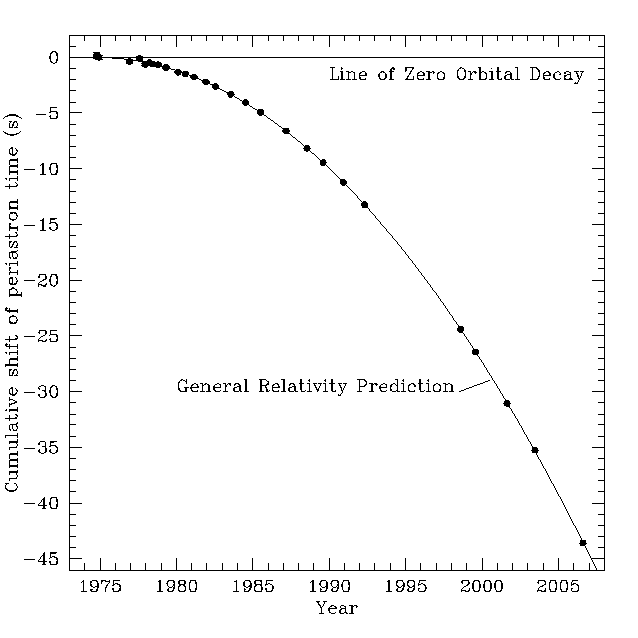
But we really needed to detect these waves directly! So what are we doing to discover them? For example, you can shoot ultra-precise lasers at a known wavelength over long distances in different directions. This light is reflected from the mirrors and sent back; you collect the light from both directions and look at the interference pattern.

Gravitational waves are extremely weak, so you need a very long base (to get a large number of wavelengths - you need to detect a change of 1/10 28 ) to detect a small shift in one of two distances.
And there is such a project on Earth: a laser-interferometric gravitational-wave observatory , LIGO .
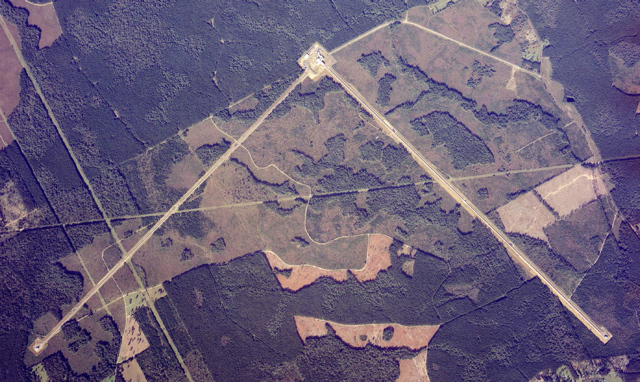
But LIGO is on Earth, where we are not only limited in the possibilities of passing laser beams, but also in protecting the experiment from surface vibrations.
It will be much easier to detect gravitational waves in space!
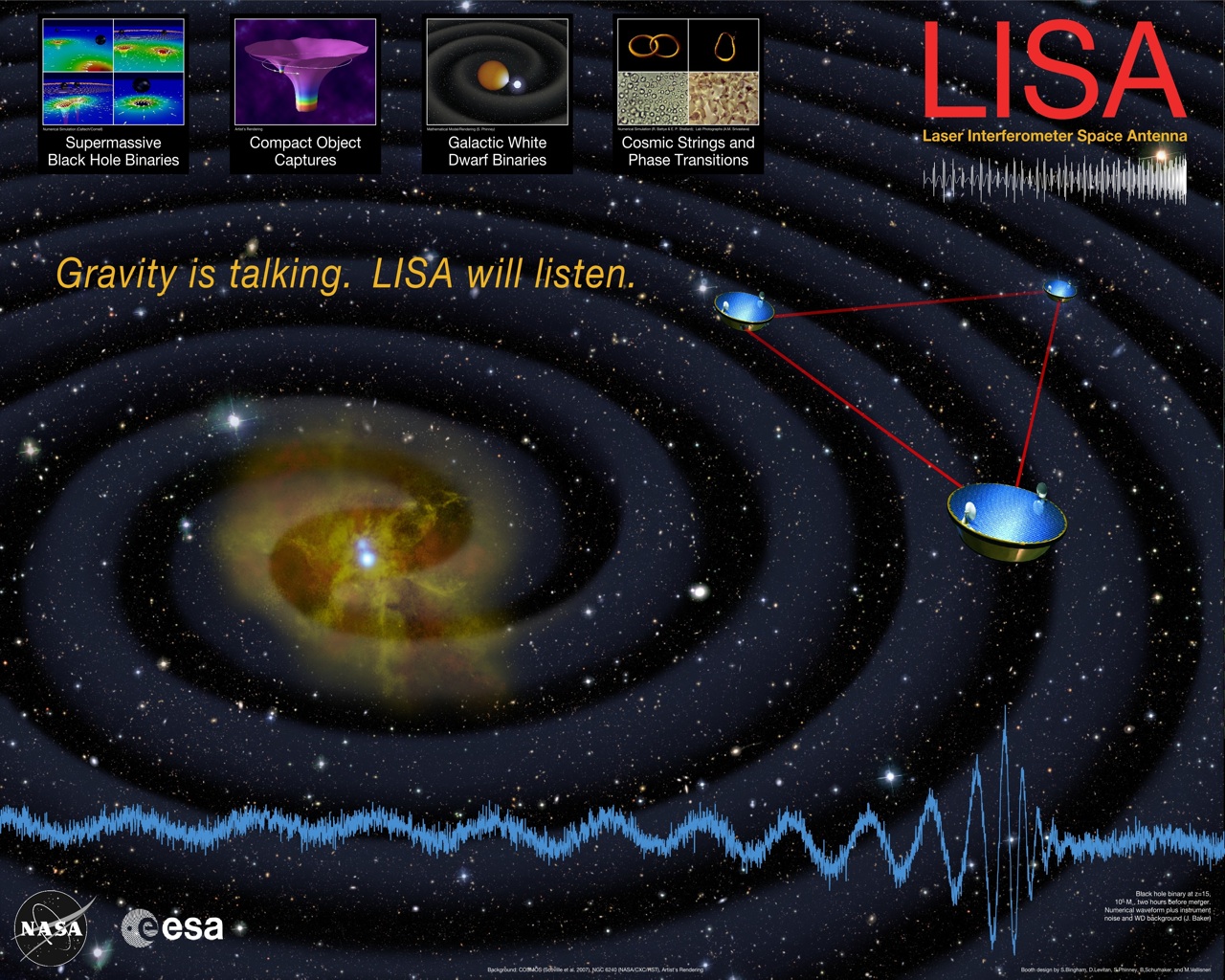
It is for this purpose that a project of an improved space antenna using the principle of a laser interferometer, eLISA (previously - LISA ), is being developed. Unfortunately, due to the high cost of space projects, problems with the budget of NASA and the inability of ESA to afford such an object alone, a set of three spacecraft designed to stay in Earth’s orbit at distances of 5 million km from each other will not be launched in the next ten years [the estimated launch time for the current time is 2034; approx. trans. ].
The Universe speaks to us all the time in a language that we did not understand. And as soon as we heard him, we immediately began to understand him!
So what does she tell us? How many, and where, white dwarfs approaching in a spiral. How many black holes merge into distant galaxies. What is the catastrophic emission of gravitational waves when combining two bodies? The universe is telling us this right now. We only need to listen, and we can catch this invisible radiation of the Universe: gravitational waves!
Note Translator: The translation has been slightly reworked due to the fact that after its appearance, the LIGO ground project discovered gravitational waves . On February 11, 2016, LIGO and Virgo collaborations announced the discovery of gravitational waves, which took place on September 14, 2015 at LIGO installations. The detected signal came from the confluence of two black holes with masses of 36 and 29 solar masses at a distance of about 1.3 billion light years from Earth, with three solar masses going on radiation.
Source: https://habr.com/ru/post/370347/
All Articles